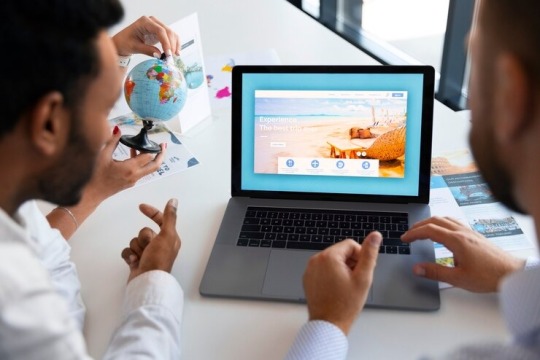#travel portal development compnay
Explore tagged Tumblr posts
Text
What Are the Steps Involved in Travel Portal Development?

A travel portal is a website that makes it easy for people to plan and book their trips. You can look for and book flights, hotels, and rental cars all in one place. This guide will help you understand the main steps needed to create your travel portal. Let’s break it down so you can see what it takes to turn your idea into a reality!
Define Your Business Objectives
Before you start building your travel portal, it’s important to know what you want to achieve. Think about these questions:
Are you creating the portal for individual travelers or travel agents?
Who will use it—business travelers, solo adventurers, or families?
What goals do you have in mind? For instance, do you want to boost bookings, make the customer experience better, or increase profits?
Having clear goals will help you create a travel portal that meets your needs effectively.
Conduct Market Research and Competitor Analysis
To create a successful travel website, it's important to understand what your audience wants. Look into what travelers are searching for in a travel platform. Check out your competitors—see what features they have and what makes them popular. Also, find areas where you can offer something new. This research will help you make a travel portal that is different and appealing in the busy travel market.
Plan the Features and Functionalities
The success of your travel portal depends on its features. Make a list of essential and advanced features to include:
Essential Features:
A search engine for flights, hotels, and car rentals.
A real-time booking system.
Secure payment gateways.
User account management.
Advanced Features:
Integration with third-party APIs like flight or hotel suppliers.
Multi-currency and multi-language support to serve global users.
Customer support through chatbots or live chat.
Analytics to track performance and user behavior.
These features will make your portal user-friendly and efficient.
Choose the Right Technology Stack
Technology plays a key role in building travel websites. Choosing the right tools and platforms is very important:
Use programming languages such as PHP, Python, or JavaScript for the website's coding.
Pick reliable databases to store user information and bookings.
Make sure your website works well on mobile devices so people can access it anywhere.
Having a solid tech setup makes your travel website fast, safe, and able to grow as needed.
Design the User Interface (UI) and User Experience (UX)
Design is important because it grabs a user’s attention. Your travel website should be easy to use with a clear layout.
Begin by sketching a wireframe to map out where everything will go. Keep the design clean and simple.
Make sure your website works well on computers, tablets, and phones.
A good design will make users want to return to your site.
Develop the Portal
Now it's time for the building phase. Here's what the development process includes:
Backend Development: This involves creating the booking engine, setting up user accounts, and connecting to other services.
Frontend Development: This is about designing the visual look of the website and making sure it’s easy to use.
Your development team will make sure everything works well together to give users a great experience.
Integrate APIs and Third-Party Services
APIs, or Application Programming Interfaces, let your travel website connect with outside services, like booking flights, hotels, or rental cars. For example, you can:
Use Global Distribution System (GDS) APIs like Amadeus or Sabre to find and book travel options.
Add payment gateway APIs to make sure transactions are secure.
These connections give users access to up-to-date information and many choices for their travel needs.
Test the Travel Portal
Before launching, testing is critical to ensure your portal is error-free and performs well. Types of testing include:
Functional Testing: Ensure the booking process, payment gateway, and other features work correctly.
Performance Testing: Check if the portal can handle high traffic without slowing down.
Security Testing: Protect user data from breaches.
User Testing: Get feedback from a group of users to improve usability.
Thorough testing ensures your portal is reliable and user-friendly.
Launch the Travel Portal
Once everything is ready, it’s time to launch your portal. Deploy it on a reliable hosting platform and optimize it for search engines to attract users. Promote the launch through social media, email campaigns, and other channels. A well-executed launch will help you gain visibility and drive traffic to your portal.
Maintain and Scale the Portal
Launching the portal isn’t the end—it’s just the beginning. Regular maintenance is necessary to keep it running smoothly.
Update features and fix bugs as needed.
Monitor user feedback and improve the portal accordingly.
Scale your infrastructure to handle more traffic as your business grows.
Consistent updates and improvements will help your portal stay relevant in the competitive travel market.
Conclusion
Travel portal development is a step-by-step process that requires careful planning, design, and execution. By following these steps, you can create a portal that meets the needs of your users and helps your business grow. Whether you’re catering to individual travelers or businesses, a well-built travel portal is an invaluable tool to boost your success in the travel industry.
If you’re ready to start your travel portal development journey, consider working with an experienced development team to ensure a smooth and successful process.
0 notes